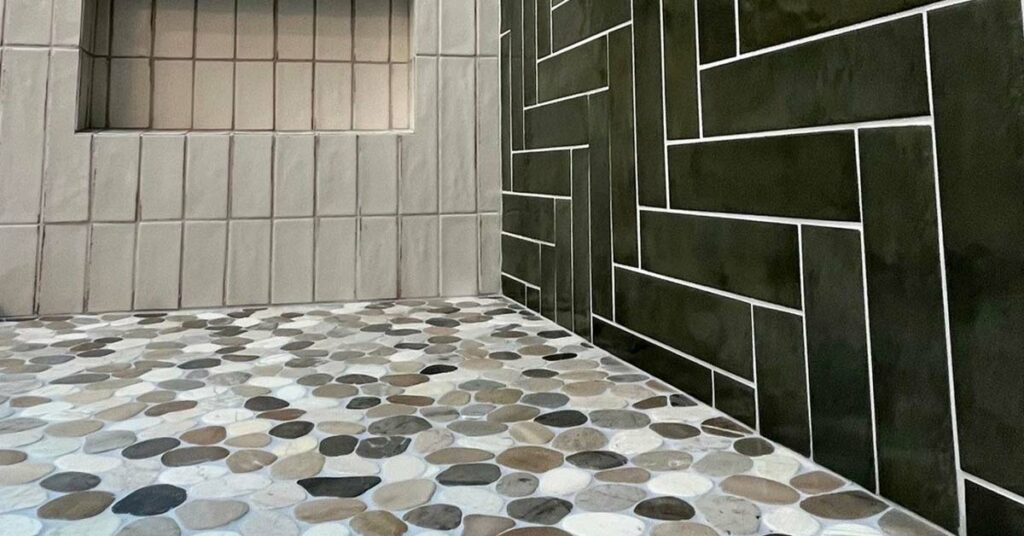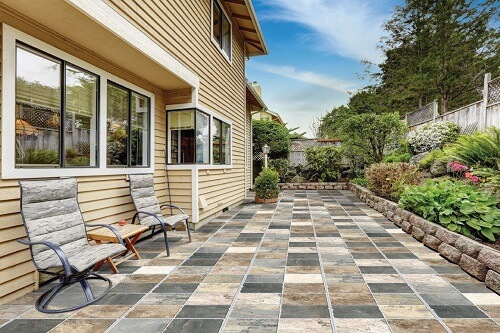An overview
E-State Nirman Nigam is an organization that plays a significant role in the construction and development of various state-level infrastructure projects in India. The organization is tasked with overseeing the creation of urban and rural development projects, including residential complexes, commercial buildings, roads, and public amenities. In these large-scale projects, materials like tiles and stone are essential components that contribute both to the aesthetic value and functional integrity of the constructed spaces. In this context, tiles and stones are used in various capacities, from flooring to facades and even in landscaping and street design.

The Importance of Tiles and Stone in Construction
In construction, tiles and stones serve several critical purposes, including durability, aesthetics, and sustainability. These materials are known for their longevity, resistance to wear and tear, ease of maintenance, and ability to enhance the visual appeal of spaces. In public and residential infrastructure, they are used for flooring, cladding, wall finishes, and external surfaces. The choice of these materials is particularly crucial in state-run projects, where budget constraints and long-term performance are significant considerations.
Types of Tiles and Stones Used in E-State Nirman Nigam Projects
-
Ceramic and Porcelain Tiles: E-state Nirman Nigam Ceramic tiles are among the most common materials used in residential and commercial spaces. They are made from clay, which is fired at high temperatures to create durable, water-resistant tiles. Porcelain tiles, a subtype of ceramic tiles, are made from finer clays and are more robust and less porous, making them suitable for high-traffic areas like corridors and kitchens. These tiles are cost-effective, available in a wide range of colors, patterns, and finishes, and easy to maintain. In state-run projects, their affordability, durability, and versatility make them ideal choices.
-
Vitrified Tiles: Vitrified tiles are made by fusing silica, clay, and other minerals at high temperatures. These tiles are known for their high water resistance, durability, and ease of maintenance. They have become increasingly popular in state construction projects because of their robust nature, which is ideal for heavy-footfall areas such as hospitals, schools, and government buildings. Their non-porous nature also makes them resistant to stains and moisture, which is crucial for areas with high humidity, such as bathrooms and kitchens.
-
Natural Stones: Natural stones like granite, marble, limestone, sandstone, and slate are frequently used in E-State Nirman Nigam projects. These materials are known for their elegance and aesthetic appeal, but also for their strength and durability. Natural stones are used in flooring, countertops, facades, and even in landscaping projects. For instance, granite is widely used for flooring and kitchen countertops due to its hardness and resistance to scratching and staining. Marble is preferred for decorative purposes and is often used for cladding and flooring in high-end residential or commercial projects.
-
Engineered Stones: Engineered stones, such as quartz and composite stones, are manufactured using a combination of natural stone and resin. These materials are engineered to provide more consistent patterns and textures than natural stones. They are more affordable, durable, and easier to maintain, making them a popular choice in state-run infrastructure projects where cost-efficiency and functionality are key concerns.

Applications of Tiles and Stones in E-State Nirman Nigam Projects
-
Flooring: One of the most common applications of tiles and stones in E-State Nirman Nigam projects is in flooring. Tiles, both ceramic and vitrified, are commonly used for residential flooring in apartments, government offices, and commercial spaces. Stone flooring, especially granite, is used in more premium projects or in high-traffic zones where durability is paramount. Natural stone tiles are also used in public spaces like malls, airports, and government buildings to create a lasting impression of sophistication and strength.
-
Wall Cladding: Wall cladding is another area where tiles and stones are extensively used. In large infrastructure projects, stones such as marble, sandstone, and granite are often used for exterior wall cladding. This not only enhances the aesthetic appeal but also protects the structure from weathering and environmental factors. Additionally, ceramic tiles are frequently used for interior walls in kitchens and bathrooms due to their ease of cleaning and maintenance.
-
Paving and Landscaping: Stone is commonly used for outdoor paving, landscaping, and street design in E-State Nirman Nigam projects. Materials like cobblestones, sandstone, and slate are used for roads, walkways, and garden paths. These stones not only provide a robust surface but also add to the visual appeal of public spaces. Additionally, tiles can be used for decorative landscaping, creating aesthetically pleasing designs in parks, plazas, and public squares.
-
Countertops and Sills: Natural stones like granite and marble are used for countertops in kitchens and bathrooms in both residential and commercial projects. Their durability, resistance to stains, and aesthetic qualities make them the preferred choice for high-end finishes. Window sills and thresholds in buildings are also commonly made from stone for both functional and decorative reasons.
-
Public and Institutional Buildings: The choice of tiles and stones plays a crucial role in the construction of public and institutional buildings managed by E-State Nirman Nigam. For instance, in government offices, education institutions, hospitals, and other public buildings, the durability and aesthetic appeal of stone and tile materials contribute to creating welcoming, functional, and long-lasting structures. Stones like granite are used for flooring and facades, while marble may be used for decorative elements like staircases, columns, and other ornamental finishes.

Quality Standards and Sourcing of Tiles and Stones
The choice of materials in E-State Nirman Nigam projects must adhere to strict quality standards. Tiles and stones used in public infrastructure must meet specific criteria in terms of strength, water resistance, and durability. Manufacturers and suppliers must provide certifications that their products conform to national and international standards.
The sourcing of tiles and stones for large-scale projects requires careful consideration of both quality and sustainability. Stones are sourced from various quarries across India, with granite and marble coming from states like Rajasthan, Tamil Nadu, and Karnataka. The extraction of these stones needs to be done responsibly to avoid environmental degradation, and several suppliers now focus on sustainable quarrying practices.
Sustainable Practices and Innovations
With increasing focus on sustainability, tiles and stones in modern construction are being chosen not only for their aesthetic qualities but also for their environmental impact. Many manufacturers are now producing eco-friendly tiles made from recycled materials or using sustainable production methods. In state-run projects, such as those under the E-State Nirman Nigam, there is an emphasis on using materials that are both cost-effective and environmentally responsible.
Innovations in the production of tiles, like the development of energy-efficient and water-conserving tiles, are also gaining momentum. The use of high-quality stone materials that require minimal maintenance and have a longer lifespan helps reduce the need for frequent replacements, contributing to overall sustainability.

Conclusion
E-state Nirman Nigam Tiles and stones are integral to the success of E-State Nirman Nigam's projects, playing a pivotal role in shaping the aesthetics, durability, and functionality of the built environment. From public buildings to residential complexes and outdoor landscapes, the careful selection and use of these materials contribute to creating spaces that are not only visually appealing but also long-lasting and sustainable. The ongoing advancements in material technology and sustainable practices further ensure that these materials continue to meet the evolving demands of modern construction. In essence, tiles and stones are more than just building materials they are key to shaping the quality and identity of infrastructure in India’s urban and rural development landscape.
Leave a Reply